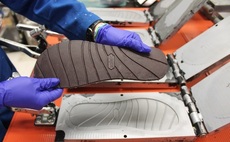
Q&A: LeapFrog Investments' Pritesh Modi
In its eight years in Asia, LeapFrog Investments has kept lower-income consumer finance at the center of its investment strategy. Pritesh Modi, director and chief actuary at the firm, discusses the value of a narrow focus
Q: LeapFrog's first fund focused on insurance in emerging markets; its second added broader financial services. How does the firm differentiate itself from other investors in these spaces?
A: The key difference is that we have a double bottom line: we invest for both profit and purpose. We seek private equity-style returns for our investors, so profit is one consideration, but equally important is purpose. The companies we invest in are focused on reaching the emerging consumer, which we define as individuals who are earning between $1.25 and $10 a day and who require financial springboards and safety nets in order to make the most of their lives. In Africa and South and Southeast Asia - our regional focus areas - that constitutes some two billion people. Within insurance we look at the entire value chain, including distribution, administration and underwriting. Beyond insurance we also look at related financial services, including pensions, savings and investment, credit and other banking services.
Q: How do you market yourselves to your target companies?
A: As a business we have eight years' experience across Asia and Africa - and our team members have many decades of personal experience and networks - so there's a fair bit of visibility that we enjoy. Secondly, LeapFrog is unique in that we focus on investing in a space that's often overlooked by other PE funds: growth-stage businesses that are scaling rapidly because of their focus on many millions of emerging consumers. So our niche and our networks enable us to get into proprietary conversations - at which point our operational expertise becomes very attractive to the company. A lot of the investment opportunities originate through constructive conversations in-market. We cultivate relationships over time, and when we sense a new development, for instance a regulatory change that could lead to the need for a capital raise, we proactively reach out.
Q: And what is the appeal of LeapFrog to potential investee companies, beyond the financial support?
A: In many of the markets, such as Indonesia and the Philippines, liquidity and money is not the issue; there's a lot of capital on the sidelines. They do need the growth capital, but what they are really seeking is also the operational know-how - whether it's governance, risk management, or new product development - to take them to the next level. LeapFrog has the unique privilege of having many of the top global insurers and investors as LPs. So we have access to intellectual capital, pools of capital, and technology that many of these companies have spent years and a lot of money developing.
Q: Can you give an example of how those LP relationships helped in an investment?
A: In India we're working with some of our LPs to develop a natural catastrophe insurance cover, something that protects the vulnerable from flood, cyclone or earthquake risks. Now this is a breakthrough process because at present a lot of the loss distribution curves don't exist to map out what the risk actually is, so you do need a fair bit of entrepreneurial and creative spirit to know how to structure something of this sort: pricing it within means and within risk appetites. We are working with one of our portfolio companies and one of our investors: it is early days, but this is the kind of initiative that I think illustrate how we try to connect of the dots.
Q: You also have started to focus on technology in financial services and insurance. What prompted this expansion?
A: If you take products that work for the top end of the pyramid, and apply the same design, the same processes, and the same distribution mechanisms at the bottom, the economics invariably don't work. What we've found is the key to cracking that code is new technology. For example, for typical life insurance policies, annual premiums can be $500-1,000 or more per year. But when you're looking at the demographics we operate in, they want premiums that are a fraction of that. The key to success then is to reach a lot of people very quickly with simple products. The structure of conventional insurance companies just isn't able to support this strategy.
Q: How does technological progress lend itself to new business models in this sector?
A: One of the companies we have invested in, BIMA, facilitates the distribution of insurance through mobile operators. They were set up just over five years ago, and they're in 16 countries already, reaching over 24 million subscribers. If you look at the type of products they provide, it's a dollar premium a month, typically, providing basic personal accident insurance or hospital cash products. It's this kind of intersection of technology and old-school financial services that are reinventing the economics for this demographic.
Q: What themes in financial services do you expect to become more attractive in Southeast Asia?
A: One of the big themes that we spend a lot of time thinking about is unconventional entry points to banking or insurance. Many of the markets in Southeast Asia have informal support structures. In Vietnam the Women's Union is the third-largest membership organization after the Communist Party and the military. So they have an existing structure, supply chain and level of trust: the question is whether financial products and tools can be distributed via this footprint. The demographic we deal with is often in remote areas; having ready-made supply chains is half the battle. The trust factor is also crucial: so a community-based trust that has been built on for years is beneficial. The challenge is how to change the conversation, or rather extend it to include banking and insurance.
Q: As your remit broadens to include technology, how do you stay focused on your mandate?
A: Our current mandate is to focus on growth-stage financial services firms that reach emerging consumers. That is in fact a rather broad spectrum; as I said, we consider all elements of the value chain - and fintech and insurtech have broadened the opportunity set. Any technology that touches any part of the value chain in insurance and financial services is within our mandate.
Q: What challenges do you have to overcome in pursuing your financial inclusion goals?
A: Insurance and banking share a certain reputation; as far as life insurance is concerned, people are not really willing to discuss issues of death and mortality. Yet this is a crucial safety net to ensure one or two generations don't fall into the poverty trap. So a lot of what we do is to use trust in these supply chains to spread awareness of the value of savings in a bank versus savings under the mattress, or buying a cow, which are the traditional ways many people have saved. Similarly, many don't understand insurance, and expect a payback even without a claim. So financial literacy is a big challenge.
Q: What do you consider to be LeapFrog's biggest strength as an investor?
A: I think our greatest strength is to marry local innovation and global governance. Very often, local innovation is leapfrogging traditional systems entrenched in developed markets. On the other hand, many processes that have matured in developed markets are useful for building governance in local markets. On a related point, we have a portfolio that stretches across Africa and Asia: we often look for technologies, products, distribution, and know-how that can be transported. In the past we have developed financial products or health insurance products and taken them from Indonesia to Ghana to India, and so on. Obviously a heavy dose of localization is required, and our local portfolio companies and local teams get involved in doing precisely that.
Latest News
Asian GPs slow implementation of ESG policies - survey
Asia-based private equity firms are assigning more dedicated resources to environment, social, and governance (ESG) programmes, but policy changes have slowed in the past 12 months, in part due to concerns raised internally and by LPs, according to a...
Singapore fintech start-up LXA gets $10m seed round
New Enterprise Associates (NEA) has led a USD 10m seed round for Singapore’s LXA, a financial technology start-up launched by a former Asia senior executive at The Blackstone Group.
India's InCred announces $60m round, claims unicorn status
Indian non-bank lender InCred Financial Services said it has received INR 5bn (USD 60m) at a valuation of at least USD 1bn from unnamed investors including “a global private equity fund.”
Insight leads $50m round for Australia's Roller
Insight Partners has led a USD 50m round for Australia’s Roller, a venue management software provider specializing in family fun parks.







